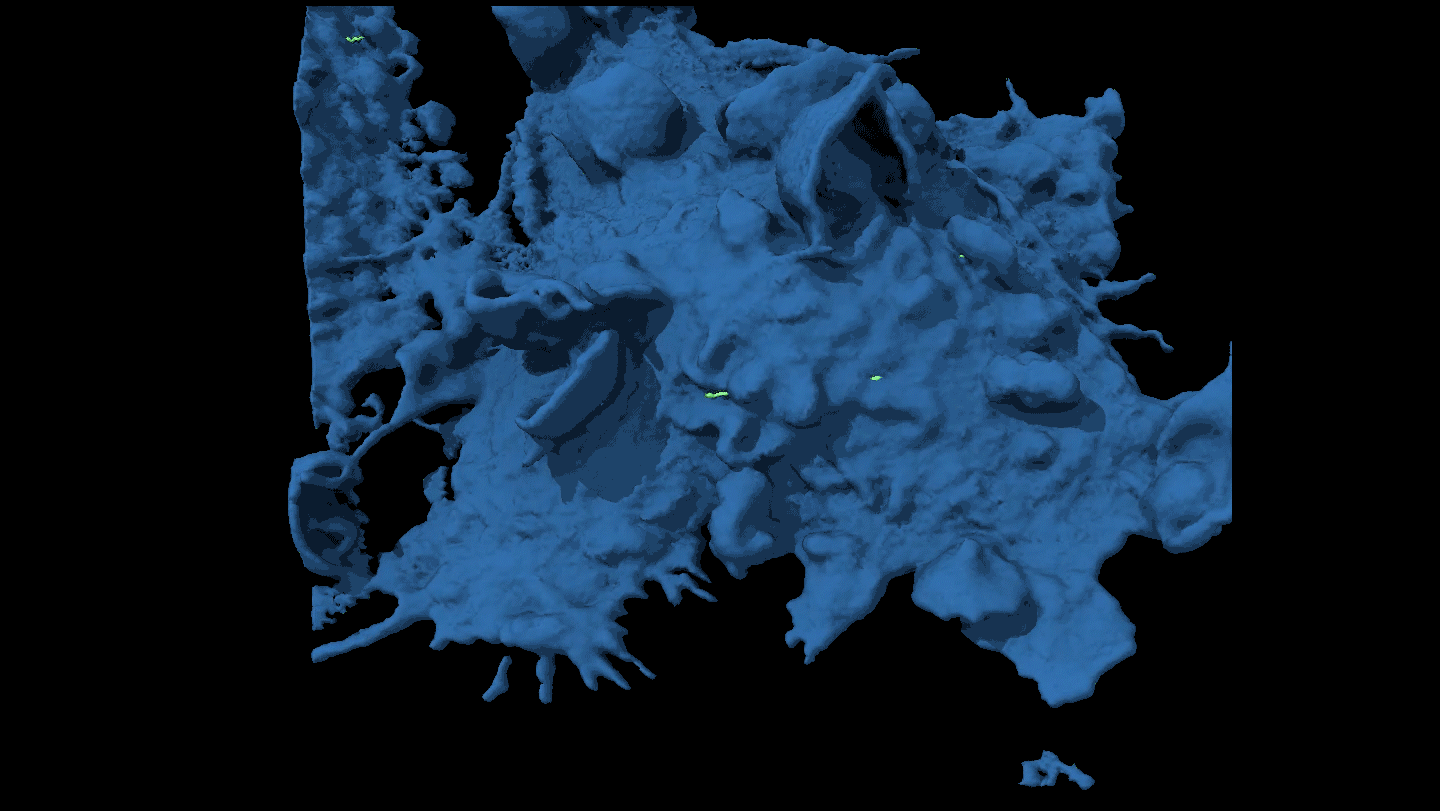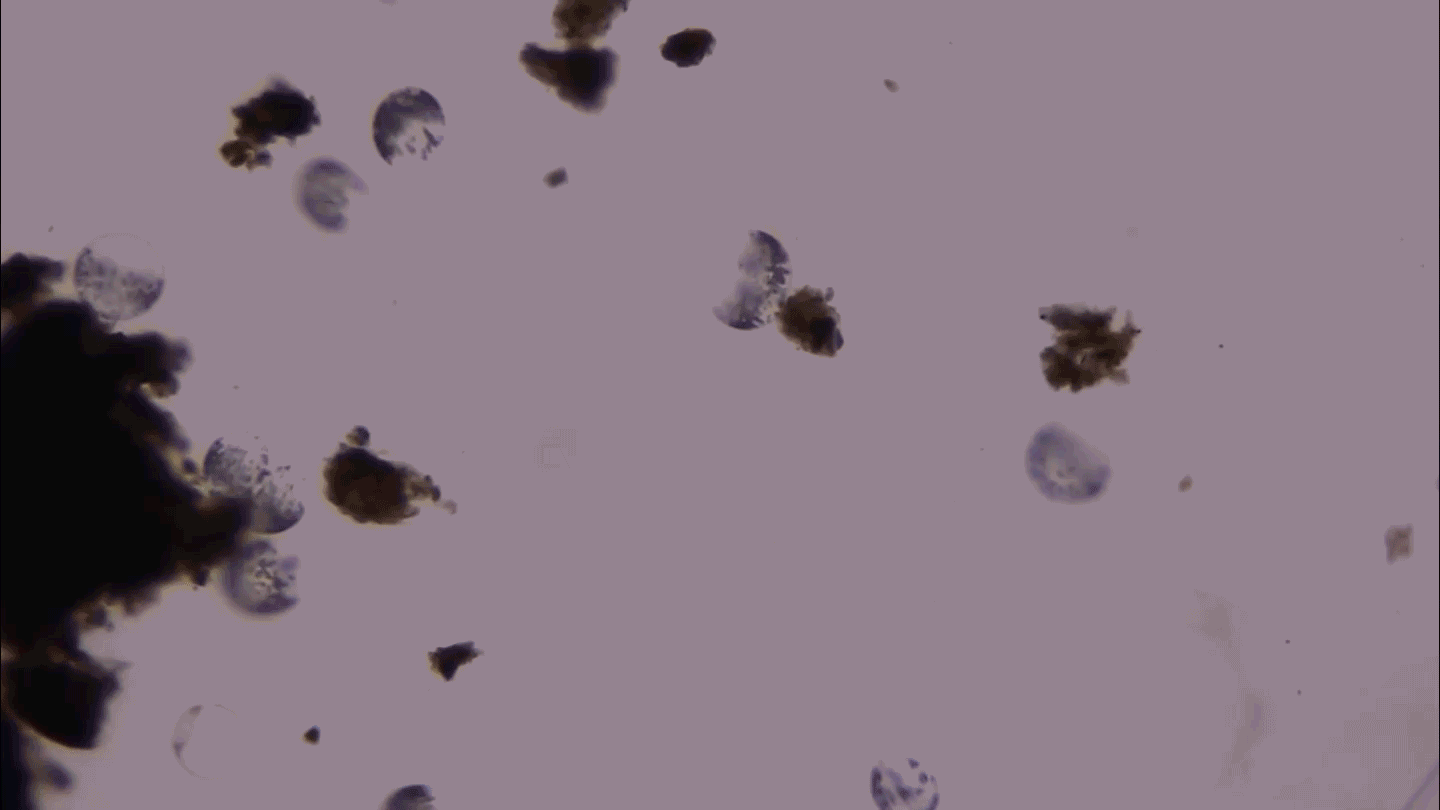Bird eggs laid in cold climates are darker, which may keep eggs warm
A global survey of bird egg color reveals a simple trend: the colder the climate, the darker the egg
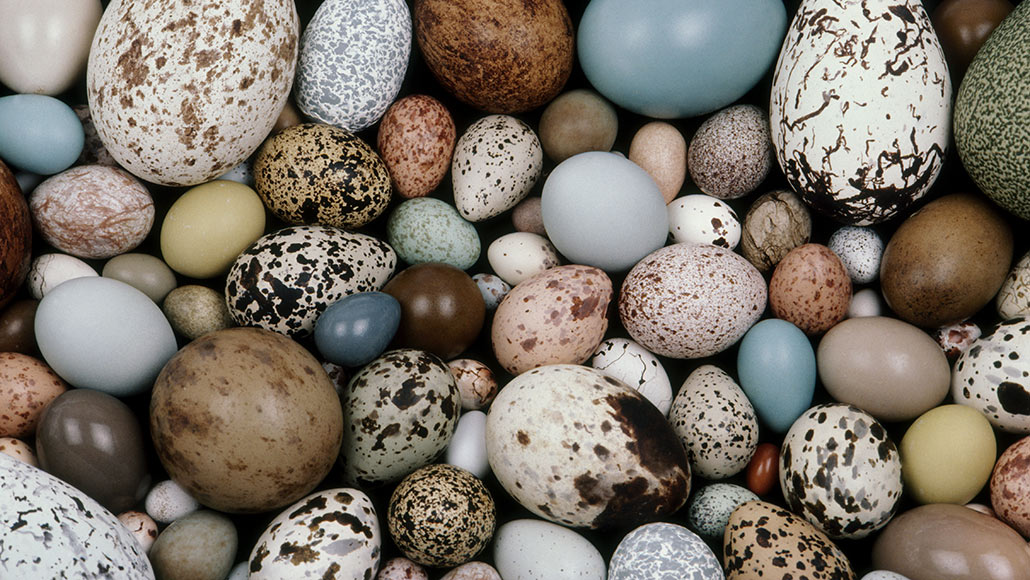
Bird eggs come in a wide variety of shapes, sizes and colors. A new global study suggests that northern birds in colder climates tend to have darker eggs.
Frans Lanting/MINT Images/Science Source
- More than 2 years ago
Bird eggs come in a dizzying array of colors. But from a global perspective, that diversity follows a simple pattern — the colder the climate, the darker the egg, new research shows.
Darker eggs absorb more heat than lighter ones, which could help developing chicks stay warm while their parents forage for food, according to the study published online October 28 in Nature Ecology and Evolution.
Biologists have long tried to suss out the selective forces that shape and color a specific species’ eggs. Those forces include keeping eggs hidden from predators, protecting them from bacteria, signaling egg quality and maintaining egg warmth. “All of these hypotheses have some level of [evidential] support,” says Phillip Wisocki, who worked on the research while studying biology at Long Island University Post in Brookville, New York.
But scientists weren’t sure whether any of these factors were important in determining egg diversity globally. “If your focus is too narrow, you can miss a lot of what’s going on,” says Wisocki’s adviser, biologist Daniel Hanley.
Using museum collections of bird eggs, Hanley, Wisocki and their colleagues compiled data on eggs from 634 bird species from 36 of the 40 living orders of birds. They then analyzed the data against a global map, and found that the brightness and color of eggshells closely correlated with temperature, even after correcting for color similarities between closely related species.
Birds in “the far north, which tends to be colder, had darker, browner eggs,” Hanley says. Eggs became lighter and slightly bluer for birds living closer to the equator, though egg colors were generally more variable in the tropics.
Color pattern
Researchers created a global map of egg color by averaging the brightness and color of eggs from species nesting within an area. Each 23,322-square-kilometer area is marked by a hexagonal dot on the map. The eggs laid in northern regions tend to be darker, while eggs get lighter and more blue towards the equator.
Global distribution of egg color
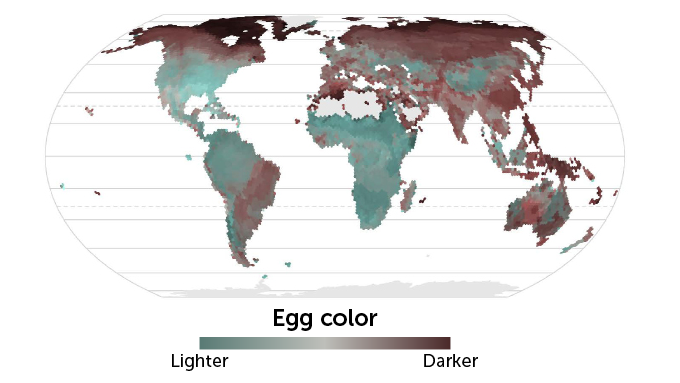
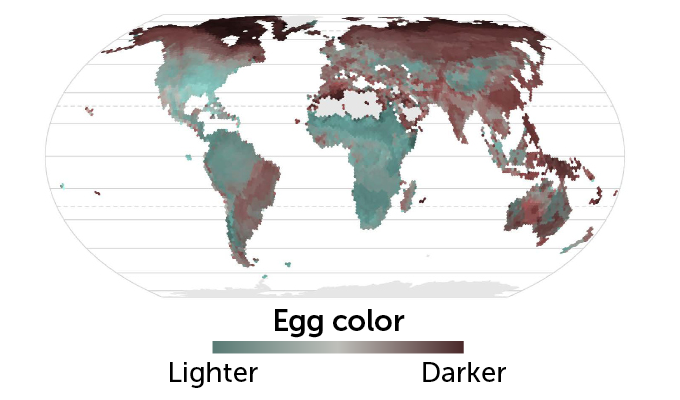
The researchers suggest the trend may reflect adaptation to the cold: A dark egg, like a dark car parked in the sun, absorbs more thermal radiation from the sun than lighter eggs. Testing the theory, the researchers exposed white, brown and blue chicken eggs to direct sunlight and tracked heat retention. Sure enough, brown eggs warmed up faster and cooled down more slowly than the lighter eggs.
“In the Arctic, parents have to go out to forage and get back to their eggs quickly,” Hanley says. “If you can buy them five extra minutes, that can actually be really beneficial for them.”
Biologist Mary Caswell Stoddard welcomed the study’s attention to the role of egg color in thermoregulation. “That’s part of what makes this study, and the discovery that birds living in colder habitats tend to lay darker eggs, so exciting,” though undoubtedly there are other selective factors at play, says Stoddard, of Princeton University.
Still, Wisocki says the study shows climate to be a major driver of egg color variation, while also expanding the notion of what color is for (SN: 10/31/18). “We usually think about color through the lens of perception — mating displays, camouflage, signaling,” he says. “In this study we show that color matters, but the observer isn’t important.”


